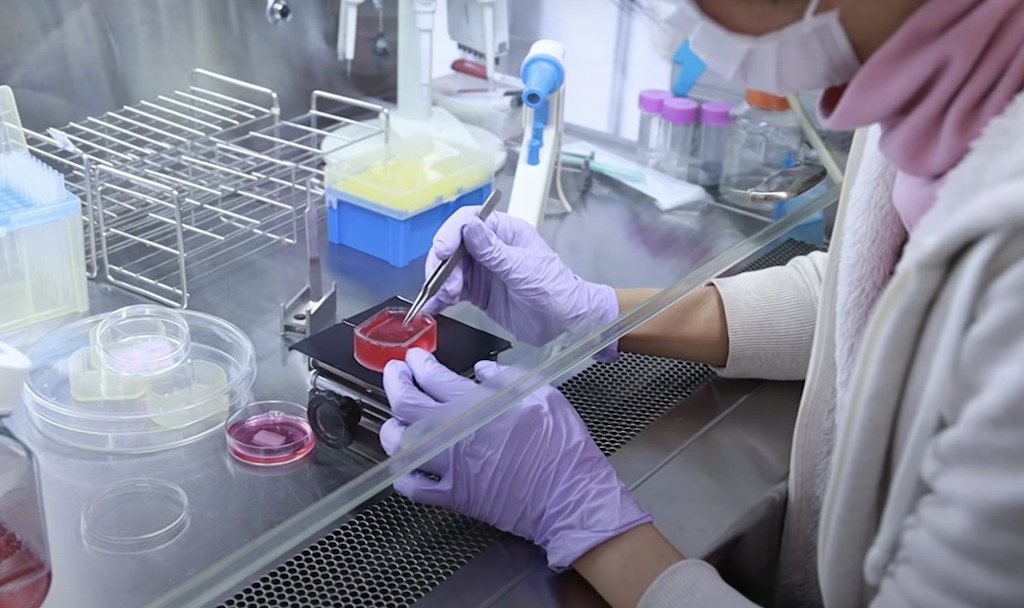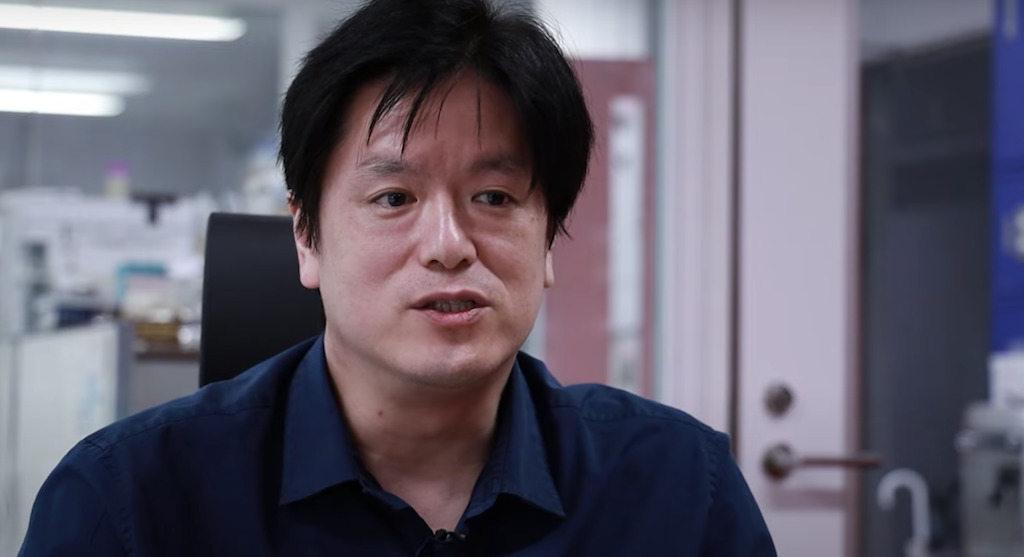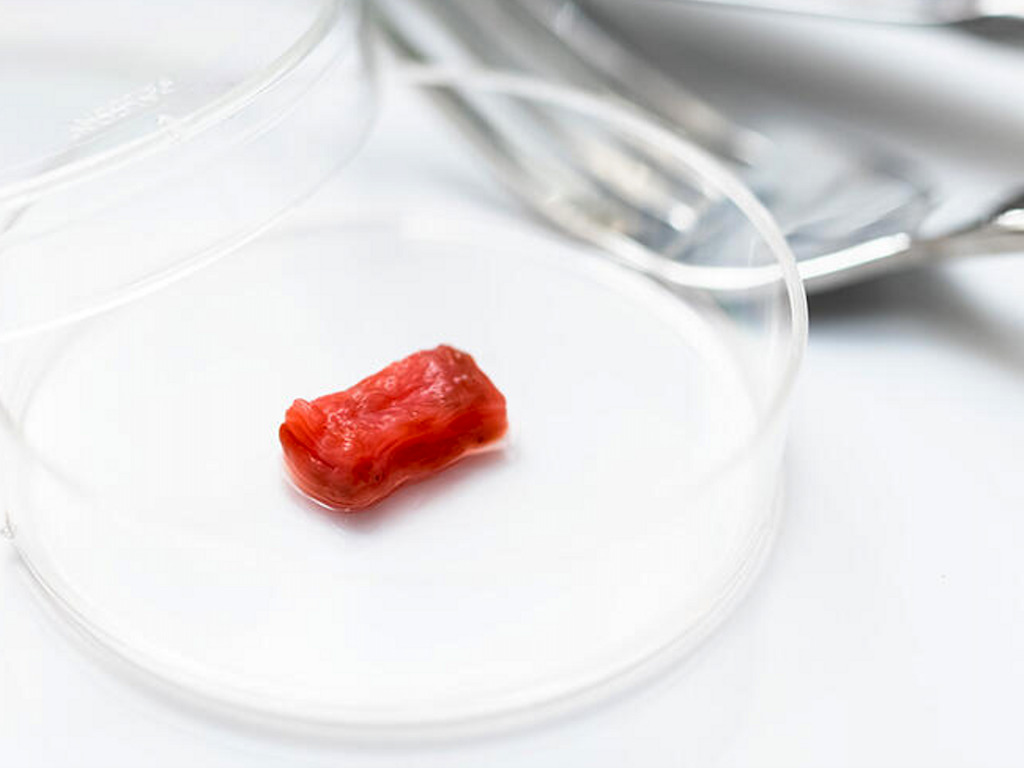Novel Cell Ag Tech: Tokyo Scientists Develop New Process To Culture ‘Millimetre-Sized Chunks Of Meat’
4 Mins Read
Researchers from the University of Tokyo have come up with a novel way to cultivate “millimetre-sized chunks of meat” by stacking and fusing together cultured beef cells. Their innovation marks another step forward in the race to develop sustainable cell-based proteins that resemble whole muscle cuts of animal meat without the need for slaughter.
In a new paper published in the Nature partner journal Science of Food, researchers from the University of Tokyo have reported a new way to biofabricate bovine muscle tissue in the lab that would realistically mimic the grain, texture and appearance of animal flesh. Using methods that were previously employed in regenerative medicine to culture bovine cells, then stacking and fusing them together, the scientists were able to develop a final “chunk” of beef.
“Using techniques developed for regenerative medicine, we succeeded in culturing millimetre-sized chunks of meat wherein alignment of the myotubes help mimic the texture and mouthfeel of steak. For this, myoblasts drawn from commercial beef were cultured in hydrogel modules that could be stacked allowing fusion into larger chunks,” explained lead author Mai Furuhashi.
“We determined the optimal scaffolding and electrical stimulation to promote contractility and anatomical alignment of the muscle tissue to best simulate steak meat.”
Using techniques developed for regenerative medicine, we succeeded in culturing millimetre-sized chunks of meat wherein alignment of the myotubes help mimic the texture and mouthfeel of steak.
Mai Furuhashi, Lead Author

The researchers also highlighted that their final product wouldn’t just be critical solution in terms of tackling the environmental impact of meat production, but would also solve the health, food safety and provenance concerns related to livestock farming – an issue that both consumers and governments around the world have been paying attention to in the wake of the pandemic.
Japanese authorities, in particular, have already kickstarted the rule-making process regarding cultured meat labelling, in hopes of expediting the commercialisation of the novel alternative protein and bolstering the country’s food security, and backed domestic food tech ventures like IntegriCulture with funding to build cellular agriculture facilities.
“Our morphological, functional and food feature analyses showed that the cultured muscle tissue holds promise as a credible steak substitute,” said said lead author Yuya Morimoto. “Significantly, microbial contamination was undetectable. This has implications for cleanliness, consumer acceptability and shelf-life.”
Our method paves the way for further development of larger portions of realistic cultured meat that can supplement or replace animal sources. This innovation promises to be a green and ethical alternative to animal slaughter in meeting our need for dietary meat.
Shoji Takeuchi, Senior & Corresponding Author
Shoji Takeuchi, senior and corresponding author of the paper, said that their novel approach to develop whole cuts of cell-based meat marks a crucial step forward in making analogues more appealing to consumers and to deliver the experience that meat-eaters desire in conventional meat products.

“Our method paves the way for further development of larger portions of realistic cultured meat that can supplement or replace animal sources,” said Takeuchi. “This innovation promises to be a green and ethical alternative to animal slaughter in meeting our need for dietary meat.”
This is just the latest in a line of scientific feats that researchers have demonstrated in recent months in the field of cellular agriculture. In January, scientists at McMaster University in Canada managed to create “slabs” of cell-based meat by stacking sheets of living cultivated fat and muscle cells, and allowing them to naturally bond together.
Taking just four days in total to culture meat and assemble the layers to create the “slab”, the authors described their approach as a “scalable” solution that could even be “tuned” in the future to replicate the marbling of real cuts of its conventionally produced counterparts.
Meanwhile, researchers from the Israel Institute of Technology are tackling another challenge in cultivated protein production – scaffolding, the building blocks for animal cells to grow around and create the muscle tissue and texture that gives meat its “bite”.
In their April 2020 paper, the scientists found that textured soy protein can create the 3D scaffolding to mould lab-grown animal cells and muscle tissue into a physical, 3D cut of meat that realistically mimics the “sensation and texture” of a cut of meat.
Lead image courtesy of University of Tokyo.




